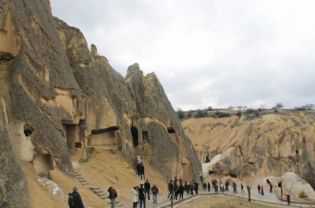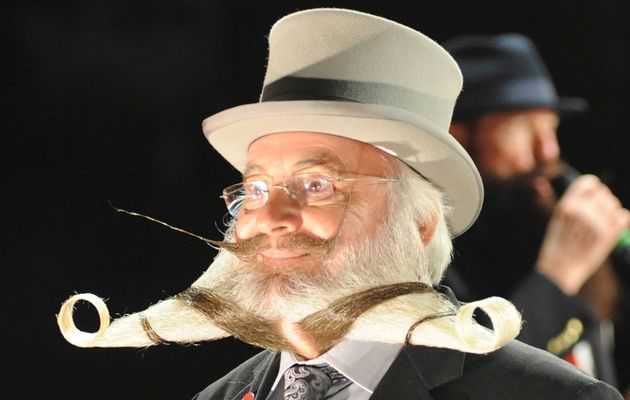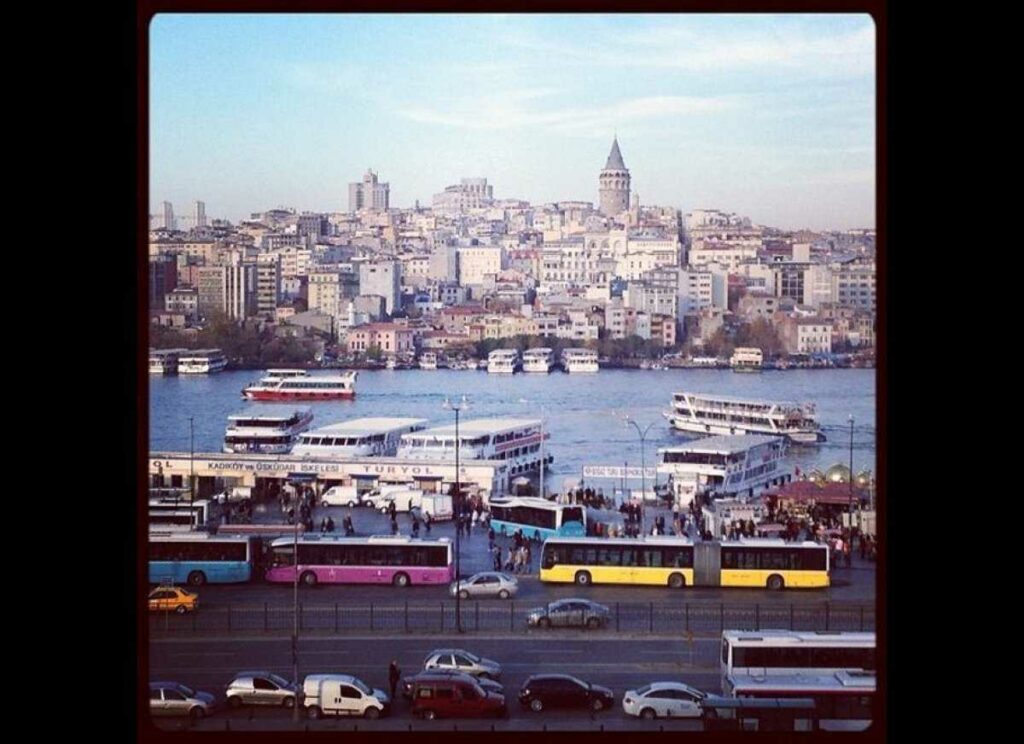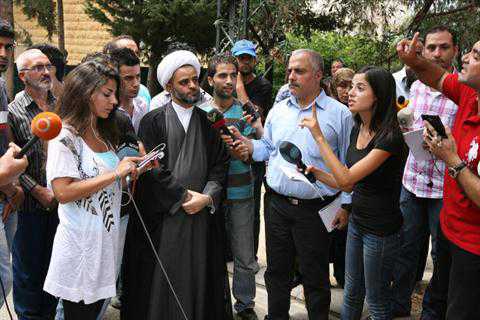VISIT TURKEY ! – YouTube.
Category: Travel
-

Exploring Cave Houses and Underground Cities in Turkey
The historical region of Cappadocia, in Central Anatolia , Turkey, is a popular name in the world of tourism, and most people link it to the plateau of rock that is situated 1,000 meters above sea level in Nevsehir Province . But the outer beauty of the rock isn’t the only attraction — caves, tunneled like giant ant colonies into the rock, have been home to local people for thousands of years, and now welcome visitors, eager for an experience from the past.

The Goreme Open Air Museum in the Cappadocia region of Central Anatolia, Turkey. (JG Photo/Wahyuni Kamah) The geological condition in Cappadocia has turned the area into a plateau of soft rock, called tufa . For nine million years, water and air have eroded the tufa so these lines of rocky mountains form cliffs and spectacular shapes and structures featuring conical rock pillars, mushrooms, caps, minarets and chimneys with the caves inside. When it’s moist, residents can easily chisel and shape the tufa into cave houses — the signature tourism draw of the destination.
It was afternoon when I arrived in Cappadocia’s small town of Urgup . The sky was clear blue, but it was freezing outside. My car dropped me off in front of a door that led to a three-story house of limestone rock — the place I had ventured so far to visit.
“Welcome! Sorry, but your room is not ready yet. Please go upstairs for some tea,” Mehmet, the hotel caretaker, greeted me.
Leaving my luggage behind, I stepped on the big stone stairways leading to the third floor. The passageway was narrow and on each level there were four to five rooms all featuring windows cut from the stone. Upon entering the living room, I was surprised by the stunning view of the neighborhood of cave houses. I saw a lot of holes on the coned hilly rock alongside normal houses and from a distance, it looked like a bird nest.
Quite different from what I had imagined prior to arriving in Cappadocia, the cave room I stayed in was equipped with an old-fashioned — but effective — heater, electricity and hot and cold running water in the bathroom. It is a far cry from the cave houses of the Flintstone Age. Instead, the decorations, bedcover and carpet in the 35-square-meter hotel room called to mind the Ottoman time. And at night, nothing could beat the complete silence it offered, leading to a great sleep.
The cave houses have been inhabited by local families for generations. The Hittites , the ancient people of Central Anatolia, first built the structures as early as the 18th century B.C . The terrain offered protection from invaders, animals and weather conditions — the temperature inside stays warm during the winter and cool in summer.
Different civilizations like the Assyrians, Persians, Greeks and Armenians settled in Cappadocia over the years. During the Roman Byzantine period, Cappadocia cave houses served as hiding places for persecuted Christians.
Later, monks built cave chapels, which can now be visited in the Dervent Valley and Goreme Open Air Museum . In the 12th century, the Turkish invaded Cappadocia and made it part of their nation.
While modern civilization just started to build bunkers in the last 60 years, thousands of years ago the Cappadocians built their own underground cities, most of which are eight levels underground. Cappadocia hosts 36 underground cities, however, only four of them are open to public.
One of the most popular underground cities is Kaymakli, which has been open to the public since 1964. The low, narrow and sloping passage of the four levels open to tourists is lit by lamps.
The first floor of the underground city is used for the stable, a small church with a door made of millstone and a living room. With all the tunnels going different directions inside, it took a while to navigate this floor.
“I myself have been learning by doing this over the last four years,” my guide said. The city’s long, low passage proved challenging to explore, but the experience was worth it.
The second floor is home to the church. The Cappadocians held their religious ceremonies in the underground city to avoid being arrested by Roman soldiers. The city also had built-in traps on each level, like a round stone to block the door and holes in the ceiling to drop spears, in anticipation of Roman raids.
The third floor was largely used for logistics like the kitchen, winery and storage place. The number of storage places in the underground city shows that the facilities could sustain a population of 3,500 people.
While the city is underground, there’s plenty of fresh air. In addition to ventilation shafts, there are also ducts, allowing people to communicate from one floor to another — a kind of ancient intercom.
Urgup is not the only town in Cappadocia where caves have become sanctuaries for hundreds of years — people in towns like Goreme, Uchisar, Ihlara Valley and Cavusin also draw tourists, eager to see cave life. In addition, the growing number of cave houses have been converted into restaurants and hotels, ranging from low-budget to five-star, where travelers can enjoy their stay.
While cave homes may seem primitive, the long-standing structures with plenty to offer modern-day residents make it clear that the Hittites and Cappadocians were highly intelligent people, boosting an advanced civilization for their period of time.
via Exploring Cave Houses and Underground Cities in Turkey | The Jakarta Globe.
-

Moustache hunters travel to Turkey for facial hair implants

Hans-Peter Weis of Pforzheim, Germany wins the Gold Medal in the Full Beard Freestyle competition at the Beard Team USA National Beard and Moustache Championships in Las Vegas, Nevada in this November 11, 2012. File photo
Image by: HANDOUT / REUTERS
Facial hair implants are causing a boom in cosmetic surgery tourism in Turkey as men head to the country for the procedure, mainly from the Middle East.
According to the Guardian, up to 50 intrepid Arab tourists arrive in Istanbul every day to undergo the procedure. Moustaches are seen as a sign of virility and seniority in many Middle Eastern countries, and visitors are arriving in Turkey in droves for procedures designed to provide thick and impressive hair on their upper lips.
The surgery is performed under local anesthetic, with doctors taking hair follicles from more hirsute areas of the body and implanting them in the face. Costing anywhere up to $7 000, the procedure has seen a spike in popularity in patients from the Middle East.
In fact the job has become bread and butter work for Turkish cosmetic surgeon Dr. Selahattin Tulunay, based in the fashionable Nisantasi district, the so-called Beverly Hills of Istanbul, and who performs up to 60 follicular transplants a month.
“For some men who look young and junior, they think (a moustache) is a must to look senior…more professional and wise. They think it is prestigious,” he told CNN.
Some companies are offering travel packages worth around $2 300 to tourists who often stay for around four days in the country to recover from the procedure and sight-see. Another surgeon, Dr. Ali Mezdegi, estimates that around 75% of his clients come from the Middle East, according to the Guardian.
In fact, Turkey’s tourism is increasingly popular with visiting Arabs who formerly vacationed in Tunisia and Egypt but have been drawn to the Eurasian country due to its security since the Arab Spring (according to some figures tourist flow from Egypt to Turkey increased by 400% in 2011).
Despite nearly two years of violence in neighboring Syria, Turkey’s tourist numbers were expected to remain stable at around 30 million visitors for 2012, as reported by Reuters.
via Moustache hunters travel to Turkey for facial hair implants – Times LIVE.
-

Tamie Adaya: Turkish Delight: The Wonders Of Istanbul
I fall head over heels in love with Istanbul each time I visit. The people, the history, the food, the joie de vivre & architecture are all irresistible.

Istanbul is an intercontinental city with its historical center in Europe & a third of its population in Asia. The city straddles the Bosphorus, sits between the Marmara, the Black & Mediterranean Seas & is built on seven hills, offering visually stunning geography & the namesake for Turkey’s famous ‘Seven HIlls’ rug pattern.
Dating back to the 1400′s, Hammams are some of Istanbul’s most beautiful buildings still standing & are one of the first experiences to have in this magical city.
One of my favorite Hammams is the Ayasofya Hurrem Sultan Hammam, designed & built by Mimar Sinan, the chief Ottoman architect who built the Blue Mosque at the request of Hurrem Sultan (Roxelana), the wife of Sultan Suleiman the Magnificent in the 16th century (1556-1557 AD).
The Turkish method of bathing was popularized in the Victorian era & is rooted in Greek & ancient Roman traditions, with stories of women secretly scrutinizing prospective wives for their sons & brothers in the raw. You prepare & dress in a warm dry relaxing room before making your way into the hararet, a hot sauna in which you perspire, slow down & unwind. After sweating away the stresses of our modern world you meet your masseur for the most rejuvenating bath & excellent exfoliating body scrub while lying on the göbektaşı (raised marble centrally heated platforms).
Emerging from the bath cleansed & with skin softer than ever, you depart feeling relaxed, purified & ready to breathe in Istanbul’s rich culture & history walking along it’s cobblestone streets.
As Europe’s oldest luxury hotel group, there is a certain amount of grandness & flair to expect from a Kempinski property & yet each time I visit the Ciragan Palace, the only Ottoman Imperial Palace & Hotel on the Bosphorus, I am spellbound by its beauty & the beauty of it’s guests. This past stay I ran into the esteemed Madeleine Albright.
Aside from the dignitaries & diplomats, I tend to run into more musical ambassadors, Lou Reed, Brian Ferry, Blondie just to name a few…
As a multi-dimensional traveller Istanbul is a wonderful city to tour. It has a rare combination of antiquities & modern relevance. The entire country is proud it’s imperial past, yet at the same time embraces & promotes a bright, optimistic future playing host to a booming economy.
Istanbul is one of the places that no matter how often you visit you always feel like there is something new to do or see or experience, making it a snug fit for any adventurous traveler.
via Tamie Adaya: Turkish Delight: The Wonders Of Istanbul.
https://www.huffpost.com/entry/turkish-delight_b_2366277#slide=1921144
-

Hot Destinations 2013: Finding the Locals’ Istanbul
Hot Destinations 2013: Finding the Locals’ Istanbul

Culinary, Cultural Immersion, Culture, Destinations, Europe, Luxury Travel, Middle East, Shopping, Travel News — on December 31, 2012 8:31 am
We can do better than the old cliche of Istanbul as “East meets West.” Instead, Courtney Crockett seeks out the vibrant local experience–the real hamam culture, Türk kahvehane and the hidden corners of the Grand Bazaar.
If you follow the Istanbul of some tour guides, you’re sure to have the so-persistent photo op wearing a Sultan costume. But if you want to get to the heart of the vibrant city, break the surface of the local side. You won’t be disappointed.
Eat + Drink
Coffee is the best starting point. The good stuff will be found in a “Türk kahvehane,” or coffeehouse. Turkish coffee is unique because it’s made using a time-honored method, where the coffee and water is heated together, unfiltered in a special copper pot called a “cezve.” The process produces a kick about double that of your average espresso.
According to local advice, kahve is usually ordered with a little sugar already mixed in. It can be a bit bitter without it. To order this “just right” amount of sweetness”, you must ask for “az sekerli.”
An explosion of chain coffee shops has flooded Istanbul in recent years, from Starbucks to the Turkish version, Kahve Dünyasl. Lately, young people in particular– 50 percent of the city’s population–seem to be embracing the old style shops, aligning with rest of the vintage crazed western world.
First time or fifth time, you’re probably going to end up at the Grand Bazaar. In one of the most bustling “shop ops” on earth, with over 4500 retailers, not many people think to sit. The results are better than any evil eye bracelet you could ever buy. I loved Fes Café. Order the “Damla Sakizh.” It’s a piney flavored infusion, almost like gin without the alcohol… a traditional Turkish spin.
A few other coffee spots include Kahvecci Ethem Tezçakar (a tiny spot with a max seating of 4), Türk kahvehanes (ocean views and good food), Kronotrop Coffee Roastery + Brewery (good for pick up), Café di Dolce and Pierre Lotti.
I cannot exclude Turkey’s other pride and joy… tea. If you’re a tea aficionado and frequent loose leaf boutiques with flavors most people have never heard of, you’ll likely want to spend a whole afternoon and a lot of Liras at Agakapisi. You can order in a seat with a great view, from a menu with +40 tea flavors. If you’d rather skip the fancy hibiscus infusion, tuck into the secret gated courtyard of Tunnel Square. Any café will do, but I liked K.V., for it’s square open window to the kitchen below your feet.
You can only drink your way to satisfaction for so long; prepare for a food coma. Istanbul has some of the most delicious eats, combining local spices, age old recipes and the fresh flavors of the Mediterranean. Food for thought; try a neighborhood “meyhene,” a sort of Turkish tavern. Check out Yakup 2. Skip the traditional main course and ask your server for a combination of hot and cold “mezzes.” Mezzes are small plates, like tapas and are by far the best way to taste a wide range of plates, from white cheese borek to eggplant salad.
It’s common in Istanbul to trust the waiters recommendation instead of ordering off the menu, so you won’t get a funny look if you request this. Also, order a glass of “raki,” the national drink. It’s an anise-flavored spirit that turns cloudy when mixed with water. Watch out, it goes down pretty easy but creeps up like tequila…so I’ve heard.
Full as you may be, remember what is truly important at the end of the day…baklava. Although you really can’t go wrong with baklava in Istanbul, some are still better than others. Karakoy Güllüglu factory happens to be the largest baklava-producing site in the world. It’s quite a dangerous stop, and if you plan on visiting I highly recommend wearing elastic waist pants. I’m usually very partial to pistachio, but their walnut baklava made me seriously question my loyalty.
While you’re in the area, just down the street is Koska, boasting to die for chocolate-walnut baklava that I can’t even talk about. The employees suggested eating baklava upside down, so the flakey crust dissolves on your tongue and you can take in the real texture. While my unsophisticated taste buds were not phased by this recommendation, it made binging on thousands of buttery calories feel slightly scientific.
via Travel News You Can Use – Hot Destinations 2013: Finding the Locals’ Istanbul.
more :
-

Turkey warns against travel to Lebanon after threats

In this August 2012 photo, Sheikh Abbas Zogheib, center, talks to reporters during a sit-in held by the Lebanese hostages’ families outside the Turkish embassy in Rabieh, north of Beirut. (The Daily Star/Hasan Shaaban)
BEIRUT: The Turkish Embassy has asked its citizens to refrain from traveling to Lebanon, Turkish media reported Monday, a day after the relatives of nine Lebanese pilgrims who were kidnapped in Syria warned Ankara to do more to secure the release of their loved ones.
Also Monday, Lebanese ministers worked to allay the fears of the relatives and urged Turkey to do more to help ensure the hostages’ release.
According to the Anadolu News Agency Monday, the Turkish Embassy urged Turkish nationals not to travel to Lebanon and for those in the Arab country to take precautionary steps.
The travel advisory comes after the families of the nine remaining Lebanese pilgrims held in Syria protested Sunday outside the embassy’s headquarters in Rabieh, saying they would exert “incremental pressure on Turkish interests in Lebanon starting next year.”
Eleven Lebanese men were kidnapped in Syria’s Aleppo district on May 22, shortly after crossing into Syria from Turkey. They were on their way back to Lebanon after a pilgrimage to Shiite holy sites in Iran.
Only two of the 11, Hussein Omar and Awad Ibrahim, have been released so far.
Turkey says it is continuing to work toward the release of the remaining hostages.
The families also asked President Michel Sleiman to contact former Prime Minister Saad Hariri and Future Movement MP Oqab Saqr to follow up on negotiations with regard to the kidnapped.
Saqr has said that he was negotiating with the kidnappers for the release the captives and claimed that the Syrian rebels want to exchange the Lebanese with Syrian “prisoners of conscience.”
During a news conference at the Interior Ministry’s headquarter in Beirut Monday, four ministers of the government’s follow-up committee on the case of the missing pilgrims met with the relatives, who voiced frustration over the delay in the release of their loved ones.
During the televised conference, Labor Minister Salim Jreissati asked Turkey to exert more efforts and help end the case of the nine pilgrims.
“The committee asks the Turkish authorities to use all available means to secure the release of our kidnapped relatives given that this is out of the control of the Syrian state,” Jreissati said.
He added that the Lebanese government would only negotiate with its Turkish counterpart without mediators.
“Just like we worked with the Turkish authorities to release the two Turks in Lebanon, what is required is for Turkey to do the same as a state,” the minister said.
Two Turkish nationals were kidnapped in August over the abduction of a Lebanese man in Syria and the case of the 11 pilgrims. The Army was able to release one of the abductees while the other was released without ransom.
Meanwhile, Justice Minister Shakib Qortbawi, one of the four government officials, voiced assurances that Lebanon has no Syrian prisoners of conscience.
“There are no prisoners of conscience and that kind of talk is unacceptable and should not be disseminated in the media,” he said, adding that Syrian detainees in Lebanon were held for judicial reasons.
“Every person is free to give their opinion and have a certain belief in Lebanon,” Qortbawi added.
Interior Minister Marwan Charbel, for his part, said Turkish officials have attributed the delay in the release of the nine men to political reasons.
“The issue has been delayed and we don’t know the reason behind that. They [Turkish officials] say it is for political reasons or some complications,” he said.
Meanwhile, Foreign Minister Adnan Mansour emphasized the strong ties between Lebanon and Turkey, saying the latter could influence the Syrian opposition to release the Lebanese hostages.
“Regardless of the reasons that have prevented the release of the hostages, we still rely heavily on Turkey in this matter due to its ties with the Syrian opposition on the ground,” he said.
“Turkey can influence them and it is continuing with its efforts,” Mansour added.
via Turkey warns against travel to Lebanon after threats | News , Politics | THE DAILY STAR.

